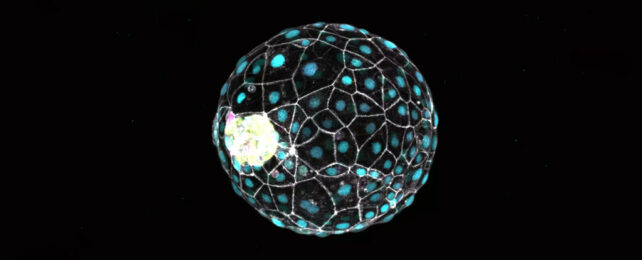Mamma bears press pause on their early pregnancies, so that their cubs are born closer to a food filled spring. Researchers led by a team in Germany have now found this same pregnancy pause button exists in human cells too.
"Although we have lost the ability to naturally enter dormancy, these experiments suggest that we have nevertheless retained this inner ability and could eventually unleash it," says molecular geneticist Nicolas Rivron from the Austrian Academy of Sciences (IMBA).
"Triggering a dormant state during an IVF procedure could provide a larger time window to assess embryo health and to synchronize it with the mother for better implantation inside the uterus."
This tactic allows animals to synchronize their resource demands with the environment's cycles of supply, delaying development until a more opportune moment.
Over 130 mammals are known to use these diapauses as part of their reproductive strategy. As some of these species, such as bears and wallabies, are so distantly related it suggests this ability is a commonly shared ancestral trait. One which even humans may still retain too.
So Max Planck geneticist Dhanur Iyer and colleagues used laboratory experiments to show the same molecule that allows other mammals to put their pregnancies on hold also works on human stem cells and in a human embryo model.
Discovered from earlier experiments in mice, the 'pause' molecule mTORi inhibits the mechanistic target of rapamycin, which is critical for regulating cell growth, division, and many other major cell functions.
When the researchers exposed a blastoid – a model of stem cells representing a five-to-seven day old embryo – to mTORi it entered a sort of hibernation for up to eight days in the lab. While its growth and cells dividing into more of themselves slowed, the reactivated blastoid was still able to attach to endometrial cells cells as an embryo would at this stage of development.
"The developmental timing of blastoids can be stretched around the blastocyst stage, which is exactly the stage where diapause works in most mammals," Iyer points out.
When the team stopped providing mTORi to the blastoids, they awoke and resumed functioning as normal.
However, Iyer and team found when they tried the same process on human stem cells, more of them died during this process compared to embryonic mouse stem cells exposed to the same conditions.
What's more, while blastoids closely resemble human embryos at the blastocyst stage, they're not so identical that it's certain the blastocysts would respond the same way, the researchers caution. But the team suspects other molecules could assist the dormancy process, to allow cells a better chance of full recovery.
While pressing pause and resume on human pregnancies at will is still completely in the realm of science fiction, understanding this process better could aid people with fertility difficulties.
"Undergoing faster development is known to increase the success rate of in vitro fertilization (IVF), and enhancing mTOR activity could achieve this," explains Rivron.
This research was published in Cell.
